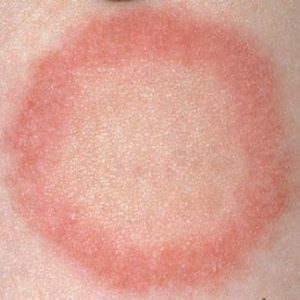Amebiasis: causes and symptoms of the disease
 Amebiaz refers to an infectious disease in which the colon is affected. One of the symptoms of the disease is the spread of abscesses to different organs. Most often this disease occurs in chronic form for a long time. Amoebiasis is an epidemic disease that is typical for areas with a hot climate.
Amebiaz refers to an infectious disease in which the colon is affected. One of the symptoms of the disease is the spread of abscesses to different organs. Most often this disease occurs in chronic form for a long time. Amoebiasis is an epidemic disease that is typical for areas with a hot climate.
Causes of the disease
Dysentery amoeba is the causative agent of the disease. This amoeba lives in two stages: the vegetative and the resting stage. Stages can move from one to another, while they depend on the habitat.
To date, doctors have isolated three forms of dysentery amoeba:
- Large vegetative form - with this form of amoeba large and mobile, it is found at an acute stage of the disease, as well as during an exacerbation, it can be seen in the bowels of stool.
- A small vegetative form is found in the stool of an infected person after the end of the acute period of amoebiasis. In comparison with a large vegetative form, in a small form the amoeba is smaller in size and less mobile. In addition, this form supports cyst formation.
- The cyst is oval in shape and covered with a dense shell, which has from one to four cores. All vegetative forms of amoebas quickly die without the absence of a human body. Unlike them, cysts adapt well in the environment and can maintain their viability in feces up to one month. In water, this period increases to eight months. Therefore, even an epidemic may occur. When dried, the cysts die very quickly.
The carrier of the infection can be a person who has a chronic or acute form of amoebiasis, a cytokine or even a convalescent. The most common way of transmission of the disease is the fecal-oral method. Less commonly, the disease is transmitted through food, contact, household or waterway. Infected can be vegetables, fruits, linens, dishes, water, toys, and other household items. In addition, spreaders of the disease can be flies and cockroaches.
A person becomes infected with amoebiasis only through the oral cavity and only by cysts that enter the stomach through pancreatic juice and there they discard their shell, turning into vegetative forms. After that, they enter the wall of the large intestine and cause ulcerative processes. The ulcers are deep and can penetrate to the serous cover. This can be accompanied by perforation of the intestinal wall.
Hematogenous dissemination of amoebas leads to the development of extraintestinal amebiasis. In this case, abscesses can form in some organs: lungs, liver, brain and the like. In the chronic form of the disease polyps, cysts and amebae are formed( tumor formations in the wall of the colon).Every person can get amoebiasis at any age. However, men at the age of twenty to fifty years are at risk.
Symptoms of the disease
Dysentery amoebae affect the intestinal mucosa. As a result, ulcers with a diameter from two to two and a half millimeters appear. The bottom of the ulcer is covered with pus. In severe cases, perforation of the intestinal wall may occur, and the development of purulent peritonitis. When healing ulcers can form: stenosis, proliferation of connective tissue, intestinal obstruction.
Amoeba can spread through the blood, it can lead to amebiasis outside the intestine. The liver is most at risk, and necrosis can occur here. In addition, sometimes amoebae develop in the lungs, the brain, the skin and other organs.
There are three main forms of amoebiasis: cutaneous, intestinal and extra-intestinal. Most often, doctors face intestinal amoebiasis. He is also called amoebic dysentery. The incubation period lasts from one to two weeks, sometimes it reaches three months. For this disease are characterized by: light, medium and heavy forms.
Patients feel satisfactory. The body temperature does not increase, there is no intoxication. Patients may complain of general malaise, weakness, fatigue, reduced appetite, and short-term abdominal pain.
The main symptom is a disorder of the stool. On the first day after infection, the patient complains of a stool with the presence of mucus. Periodicity of stool up to six times a day. Then the frequency of bowel movements increases to twenty times a day. The chair mainly consists of mucus and bloody discharge, the feces acquire a crimson color. In the acute form of amoebiasis, the patient complains of cramping pains in the abdomen.
If the rectum is affected, then cloudy tenesmus appears. At palpation the abdomen is soft and painful along the course of the large intestine. The acute form of the disease is no more than a month and a half. Even without treatment, the general condition of the patient will improve. Remission can last from several weeks to several months. After that, most of the symptoms will return and the disease will develop into a chronic form. Chronic amebiasis can last for decades. A relapse may occur. With relapse, exacerbations alternate with periods of remission.
In chronic amebiasis, asthenic syndrome can develop: patients lose weight sharply, they have an appetite, they constantly feel an unpleasant taste in their mouths. At exacerbations the patient can defecate up to thirty times a day. In this case, the pain may be mild or absent altogether. When examining a patient, doctors can detect symptoms of tachycardia or muffled heart sounds. There may be an increase in the liver in size, as well as soreness. In neglected cases, exhaustion can lead to death.
Intestinal amebiasis can give various complications: ganglion of the mucous membranes, pericoliths, bleeding, perforation of the intestinal wall followed by peritonitis, prolapse of the rectum, acute specific peritonitis, prolapse of the intestine.
Among the extraintestinal forms most often doctors encounter amebiasis of the liver, which can develop as a result of the transferred intestinal amebiasis. Liver amebiasis has two forms: a liver abscess and amebic hepatitis. With amoebic hepatitis, the patient's body temperature rises, pain in the right upper quadrant occurs, and the liver also increases. Jaundice can not be. For the abscess of the liver, the same symptoms are characteristic. The only difference is that pain in the right hypochondrium is stronger and intensified with deep breathing or with a change in the position of the body. Patients complain of weakness and severe sweating.
People suffering from this disease tend to be thin, with a pointed face and a reduced skin turgor. The skin has an earthy tinge. On the part of the heart system, tachycardia, muffled heart sounds, and lowering blood pressure are observed.
Amoebic liver abscesses can be complicated by pericarditis, purulent forms of peritonitis and pleurisy. In 25% of cases, the diseased do not survive. During amoebiasis, abscess of the lungs or amoeba pneumonia can develop. Very rarely physicians are faced with amoebic processes of the kidneys, female genital organs and spleen. Amoebiasis of the skin can lead to erosion and the occurrence of ulcers in the perineum and buttocks.



